Wharton Economist, Berkeley Alum Ann Harrison Named New Haas Dean

Ann Harrison, a renowned economist and member of the faculty at the University of Pennsylvania’s Wharton School, has been named the next dean of the UC Berkeley Haas School of Business. Harrison earned her undergraduate degree from Berkeley and served as a professor in Berkeley’s Department of Agricultural and Resource Economics from 2001 to 2011.
“Professor Harrison is an accomplished administrator as well as a world-class economist who has dedicated her career to creating forward-looking policies in development economics, international trade, and global labor markets,” Berkeley Chancellor Carol Christ said in a statement announcing the appointment. “It is a great honor to welcome her back to Berkeley to become the dean of Haas, and I have no doubt that she will be a wonderful leader the institution.”
Harrison, who will begin her term on January 1, 2019, said she is thrilled to return to Berkeley and looks forward to meeting Haas students and alumni and working with its distinguished faculty and staff, according to the release from the school.
Harrison worked as director of development policy at the World Bank before joining the Wharton faculty in 2012, co-managing a team of 300 researchers and staff. In her time with the World Bank, she reformed its research fund allocation process and supervised its most important publications, including the annual World Development Report. Setting a milestone in transparency for the institution, she convinced the World Bank’s president to release all historical records on project loans.
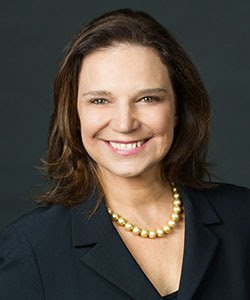
Ann Harrison named new Haas dean
“Ann has a remarkable track record of pioneering research on trade and development, including influential studies of globalization’s effects on jobs and inequality,” Berkeley Economics Professor Maurice Obstfeld said in a statement. Obstfeld serves as chief economist at the International Monetary Fund and was a colleague of Harrison’s when she worked in Berkeley’s Agricultural and Resource Economics Department.
Princeton Professor Emeritus Sir Angus Deaton, who has known Harrison since her days as a graduate student at Princeton, praised her appointment. “Based on Ann’s experience at the World Bank, she will be an effective and much-loved manager,” said Deaton, who also holds the 2015 Nobel Laureate in Economic Sciences for his analysis of consumption, poverty, and welfare.
In addition to a Ph.D. in economics from Princeton, Harrison also holds a diplôme d’études universitaires générales from the University of Paris and is a research associate at the National Bureau of Economic Research and a member of the United Nations Committee for Development Policy. Author and editor of three books—including Globalization and Poverty and The Factory-Free Economy—Harrison is one of the most highly cited scholars globally on foreign investment and multinational firms.
Harrison replaces outgoing Dean Rich Lyons, who stepped down in June 2018 after serving as Haas dean for the past 11 years. He plans to return to teaching at Haas after completing a sabbatical. Haas Professor Laura Tyson, who has served as interim dean since Lyons’ departure, will remain in the role until January, 2019.
This article has been edited and published with permissions from our sister site, Clear Admit.
Are Business School Neighborhoods Becoming More Gentrified?

When universities are found in downtown urban areas, gentrification most often follows. It almost seems inevitable since universities bring in more individuals with higher education, draw in more money, and increase new businesses. But what does the rapid increase of gentrification statistics mean for the business school students looking to start their career in a new area?
What Is Gentrification?
First, we need to look at what gentrification is. In simple terms, it’s the influx of more affluent residents moving into urbanized neighborhoods. At the outset, it may sound good, but it can be controversial.
Gentrification may improve the financial quality of a neighborhood, but it can also force the relocation of current residents and businesses due to increasing costs. Often, the process of gentrification also shifts a neighborhood’s racial and ethnic composition, as well as the average household income. This can lead to community displacement for lower-income families in gentrified areas, some of which often live in the area for several generations.
However, there is a grey area. Gentrification happens when a location becomes increasingly attractive. At that point, more high-income individuals move into the area bringing in investments in the community and leading to improved infrastructure and economic development.
What Causes Gentrification?
According to a recent comprehensive review of gentrification completed by researchers at UC Berkeley and UCLA, gentrification most often occurs when more public transportation is available. People are more attracted to transit hubs because they allow more privileged groups to trade car commutes for transit and signal a large-scale commitment to neighborhood upgrading, which, in turn, leads to increased employment opportunities.
Another spur to gentrification is education. Quality schools, universities, colleges, and medical centers tend to shape gentrification. The substantial federal support that public universities receive brings money into neighborhoods through many means including housing and housing subsidies for faculty and staff. A CityLab study revealed that universities and other academic institutions are key to attracting the creative class, creating more market demand and political pressure for better amenities, schools, and other services.
Analyzing University Neighborhood Gentrification Statistics
Since universities have such an impact on gentrification, we thought we’d take a look at what areas and schools have been most affected. While gentrification is not something most urban areas should aspire for, it happens, and it’s important to know where it’s occurring the most.
To find out, we looked at a recent study by RentCafe of the most gentrified areas in the U.S. The study took a look at the 2000 Census and the 2016 American Community Survey to see the changes that took place over a decade and a half across 1,000 U.S. ZIP codes. The study found that there are easy ways to quantify gentrification statistics when looking at median home value, median household income, and the population that holds a bachelor’s or higher degree.
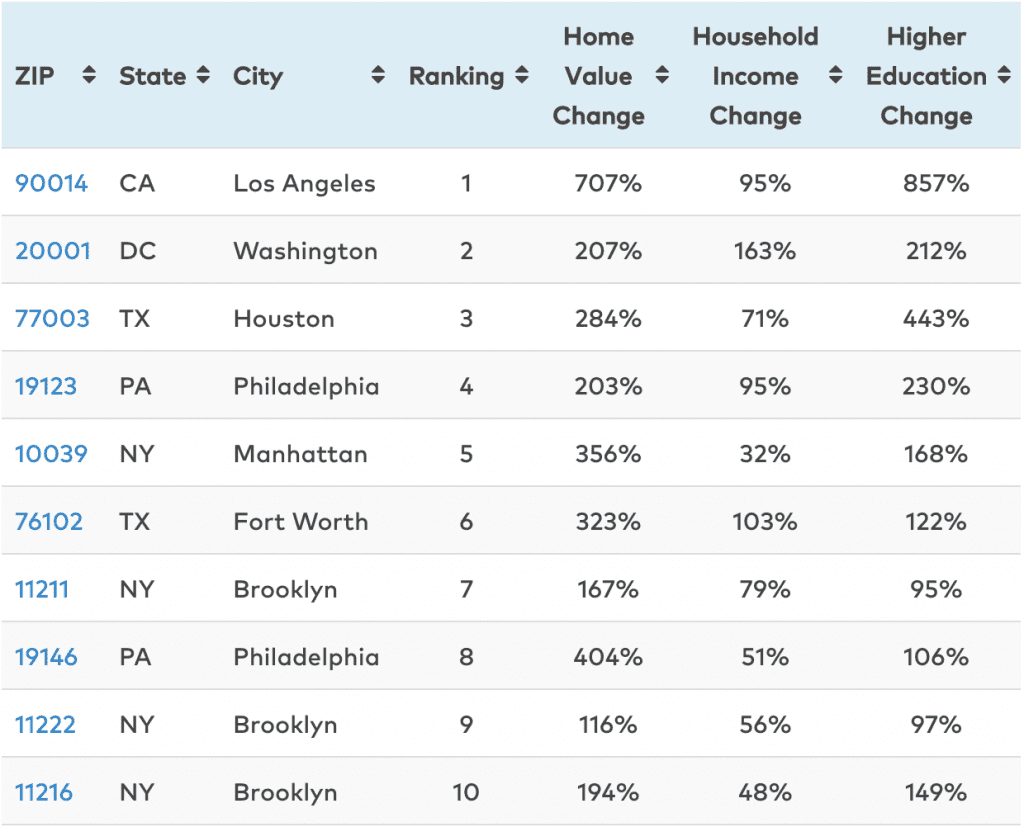
Based on the results of the study, we analyzed the top five MetroMBA universities in gentrified areas.
-
University of Southern California
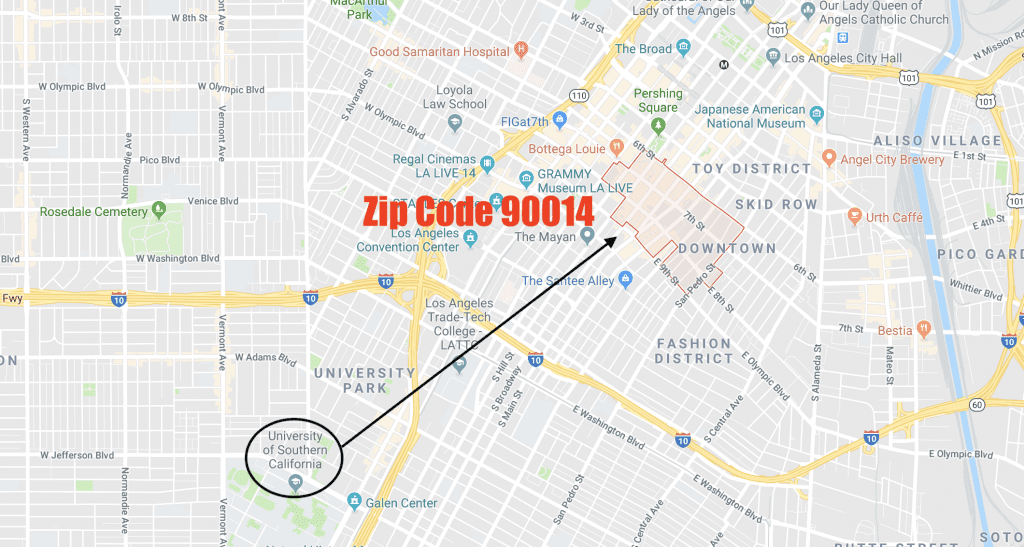
Located less than five miles away from ZIP code 90014 in Los Angeles, USC Marshall is just on the edge of the most gentrified area in the U.S. Over the last 16 years, this area has witnessed:
- A 707 percent increase in home values
- A 95 percent increase in median household income
- And an 857 percent increase in people holding bachelors or higher degrees
So, while some at USC might be fighting gentrification, it may not be working. Just last year, USC opened up a brand-new $700 million USC Village with a Target Express, Trader Joe’s, and 15 restaurants, transforming the surrounding neighborhood. And even though as part of the development USC provided $20 million for construction of off-site subsidized housing, there are still concerns.
“Across the street, land values are going to increase,” Joe Donlin, Associate Director of Strategic Actions for a Just Economy, told KPCC. “We know the landlords are going to rent at higher levels of rent.”
-
Howard University
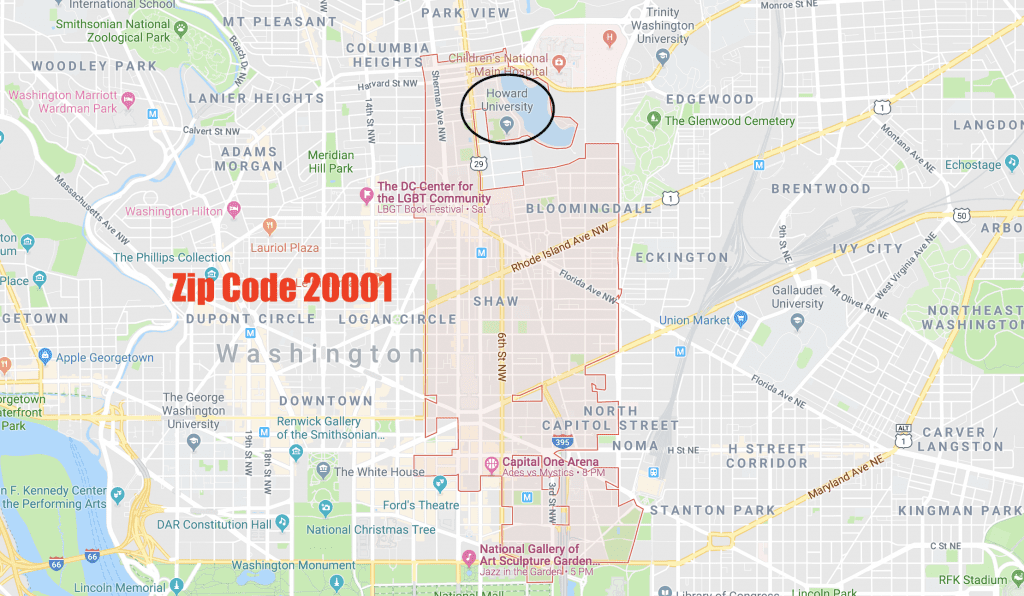
Located in Washington, D.C. Zip Code 20001, Howard University’s campus is located directly in the second most gentrified area in the U.S. Over 16 years, the area has witnessed:
- A 207 percent increase in home values
- A 163 percent increase in median household income
- And a 212 percent increase in people holding bachelors or higher degrees
The gentrification statistics of the Howard University area hasn’t gone unnoticed. According to NPR, there has been a drastic change:
“The area, located just a couple of miles north of Capitol Hill, was once working-class and black. But as hundreds of new residents move to D.C. each month, more non-black residents move into Howard’s neighborhood. And as property values rise, the university is trying to capitalize on the hot real estate market.”
-
University of Houston — Downtown
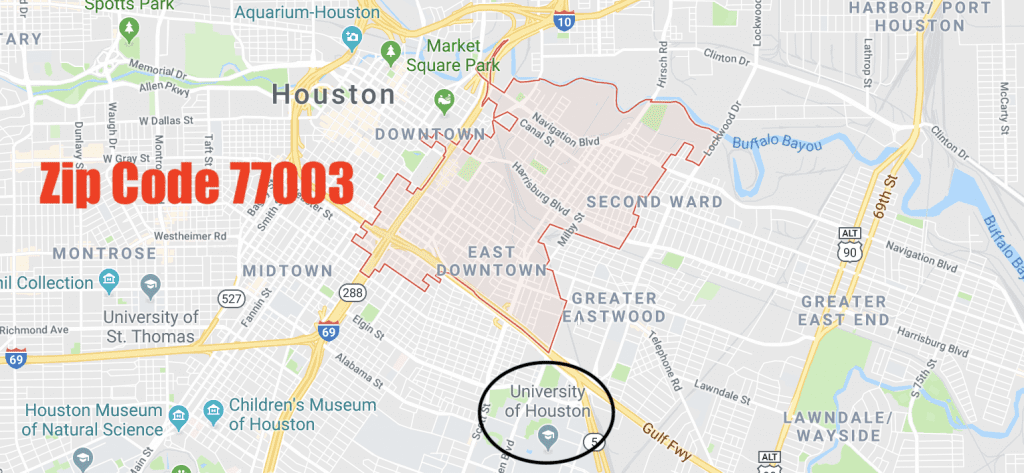
Located just steps away from zip code 77003, The University of Houston campus is located near the third most gentrified area in the U.S. In the last decade and a half, the area has seen:
- A 284 percent increase in home values
- A 71 percent increase in median household income
- And a 443 percent increase in people holding bachelors or higher degrees
Much of the gentrification can be laid at the university’s feet as its student housing footprint has expanded into surrounding neighborhoods over the last decades. According to the Houston Chronicle, “In the portion of the neighborhood closest to downtown, which includes Emancipation Park, median home values increased 176 percent between 2000 and 2013, according to an analysis of census estimates conducted by Governing.”
-
University of Pennsylvania
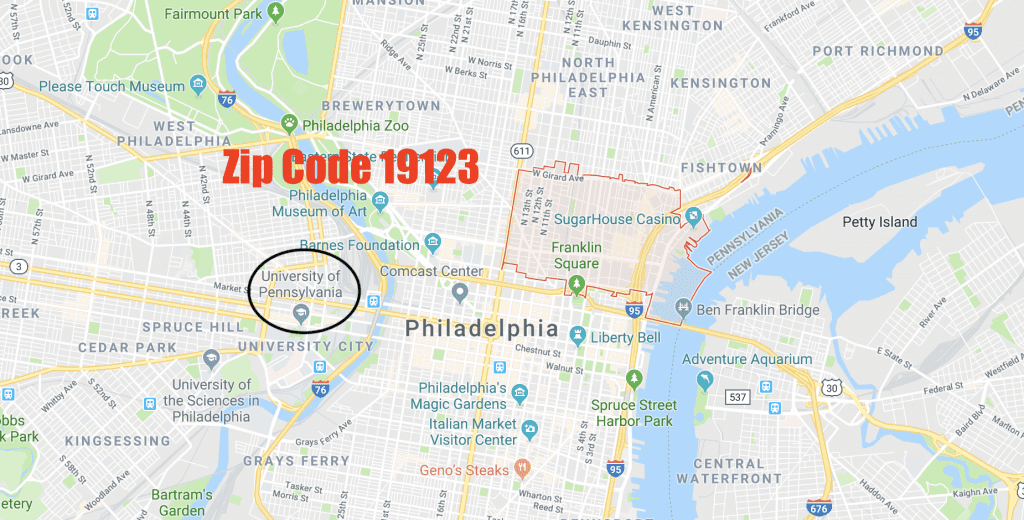
The Wharton School at UPenn is less than five miles outside the fourth most gentrified neighborhood in the country: zip code 19123. This area, over the last 16 years, has noticed:
- A 203 percent increase in home values
- A 95 percent increase in median household income
- And a 230 percent increase in people holding bachelors or higher degrees.
In fact, UPenn has had a complicated history with gentrification over the years, dubbed Penntrification by some. The problem, according to The Daily Pennsylvania, is that in West Philadelphia Penn students’ demand for housing is displacing low-income families. There have even been protests criticizing the university for causing gentrification in the area.
-
Texas Christian University
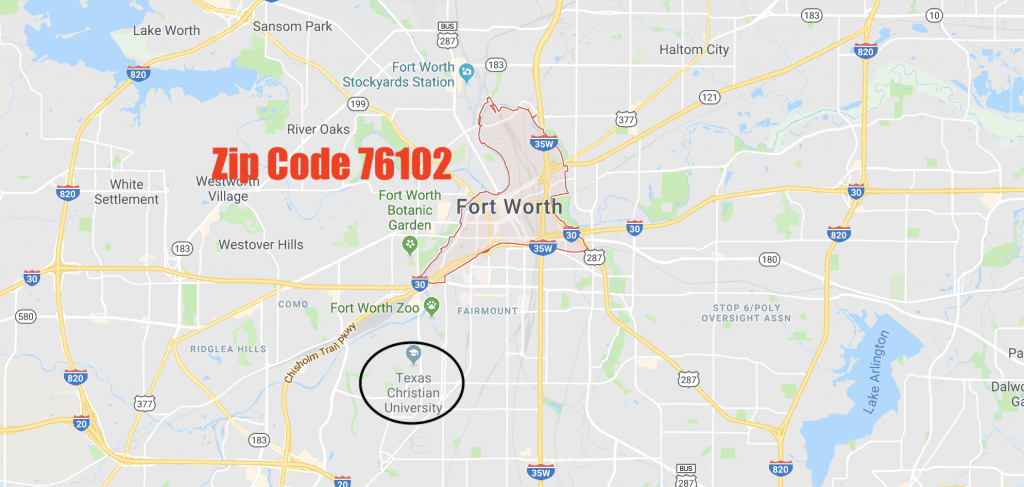
Fort Worth, TX, contains the sixth most gentrified area in the U.S.; just two miles away from Texas Christian University (TCU). Over 16 years, the area has witnessed:
- A 323 percent increase in home values
- A 103 percent increase in median household income
- And a 122 percent increase in people holding bachelors or higher degrees
While Fort Worth’s growth has brought new life to the city’s urban core, it’s also sky-rocketed property values. In particular, the areas around TCU are growing quickly. The university recently completed a $100 million renovation for its football stadium—just five years after its last overhaul, which reportedly cost $164 million.
10 Highest GPA Averages in the Business School World

The role of a GPA in MBA admissions is a hotly debated topic among both admissions officers and applicants. How much does it really matter? Does a low GPA destroy your chances of getting into a top business school?
One of the most important things to keep in mind when considering how your undergraduate GPA will impact the MBA admissions process is the fact that not all GPAs are alike. Far from a standardized figure, GPA and the way it’s measured can vary from school to school- even major to major. For this reason, it can be difficult to use the GPA’s of different applicants as any accurate predictor of success.
An student’s GPA will always be an important part of the admissions process, because it helps tell admissions officers about past academic success. Still, admissions officers are well aware of the high level of variability between GPA scores. Taking this into account, most officers working in MBA admissions will always look for more to an individual’s story than just the GPA. Numbers like a GMAT/GRE can often paint a much more exact picture of future academic success than the highly variable GPA. Designed for standardization and to test individuals on the specific challenges of an MBA, a GMAT score allows admissions officials specific insight into each application.
When considering GPA, a general rule of thumb is to not ride or die by this number—whether for better or for worse. A low undergraduate GPA doesn’t necessarily spell disaster for one’s MBA ambitions, and even a perfect 4.0 can’t save an application if the other factors don’t add up.
Overall, the exact number of an undergraduate GPA may be less important than the story behind it. If your low GPA was a result of illness or another external factor while in school, personal statements on the application are a great opportunity to give context behind the numbers and help tell your story to admissions officials.
YOU MAY ALSO LIKE: The Highest Paying MBA Internships You Can Find
Nevertheless, getting a sense of the average undergraduate GPA for your prospective programs can help give provide crucial insights. Class profiles and statistics for business schools throughout the country can give prospective students a good sense of the typical student looks like in each program, and help applicants decide if they’ll be a good fit.
Below, we take a look at the top 10 MBA programs with the highest average undergrad GPA. Take a closer look at these top schools to get an idea of the average student in each program- and your potential future classmates.
10 Highest GPA Averages for MBAs
1. Stanford University Graduate School of Business
The highest GPA average for MBA students in the U.S. belongs to the class at the Stanford University Graduate School of Business. For the Class of 2019, the average undergrad GPA was 3.74. This is down slightly from the school’s 2015 average of 3.75.
2. Harvard Business School
Often jockeying for position with Stanford, HBS took the number two spot this year with an average undergrad GPA score of 3.71. Three years ago, HBS still loomed large with a 3.66 average, and it just keeps getting higher.
3. Haas School of Business – UC Berkeley
Staying on the heels of Harvard, the Haas School of Business at UC Berkeley takes a top spot today with an undergraduate GPA of 3.7. This is a slight increase from the school’s 2015 average of 3.66.
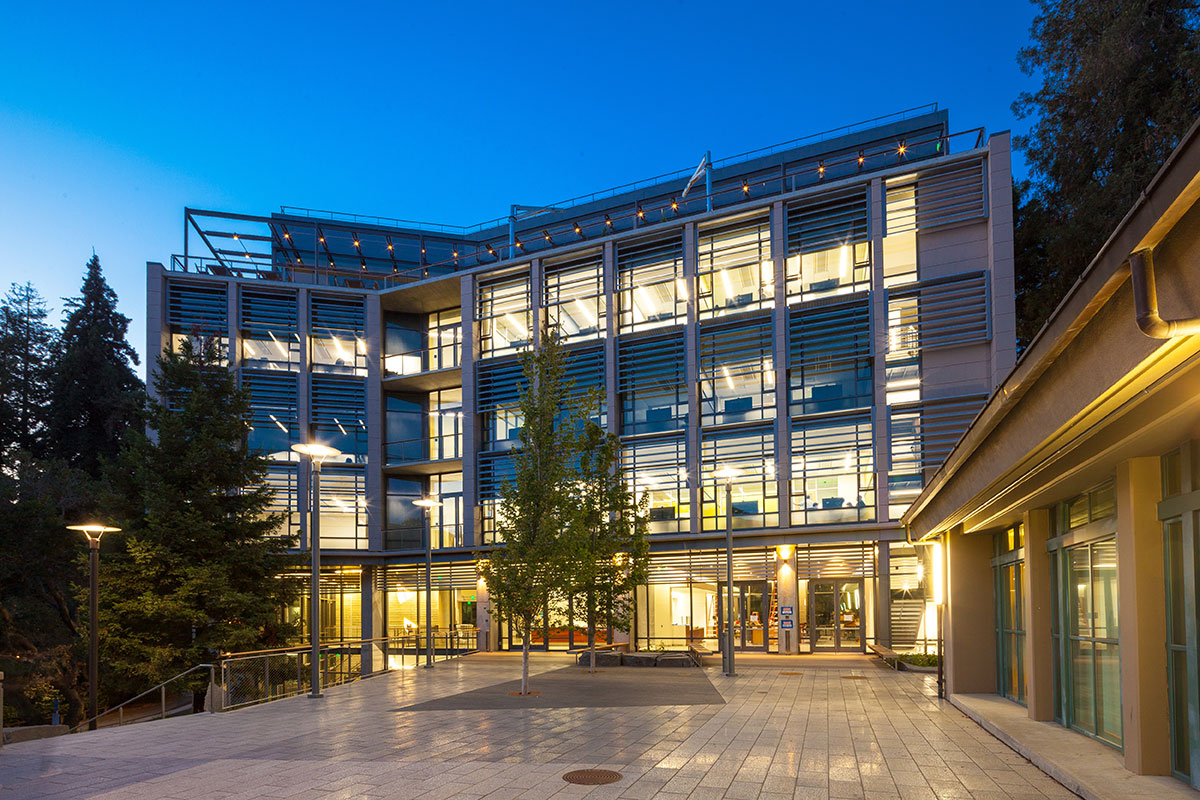
The Haas School of Business GPA average for MBA applicants rose from 3.66 to 3.7 since 2015.
4. Yale School of Management
Significantly up from its GPA average of 3.6 in 2015, the Yale School of Management today has one of the highest undergraduate GPAs in the country at an average of 3.69.
5. Booth School of Business – University of Chicago
The MBA at University of Chicago’s Booth School of Business has consistently maintained one of the top GPA averages for programs in the U.S., up from 3.59 in 2015 to 3.6 this year.
6. The Wharton School – University of Pennsylvania
The Wharton School, consistently recognized for having some of the country’s top business programs, is nothing if not consistent. With a 3.6 average for incoming students between 2012 and 2015, Wharton maintains a perfect 3.6 average GPA this year as well.
7. Kellogg School of Management – Northwestern University
Northwestern’s Kellogg School of Management is another school where consistency is key. From 2014 to today the school has remained at an undergraduate GPA average of 3.6
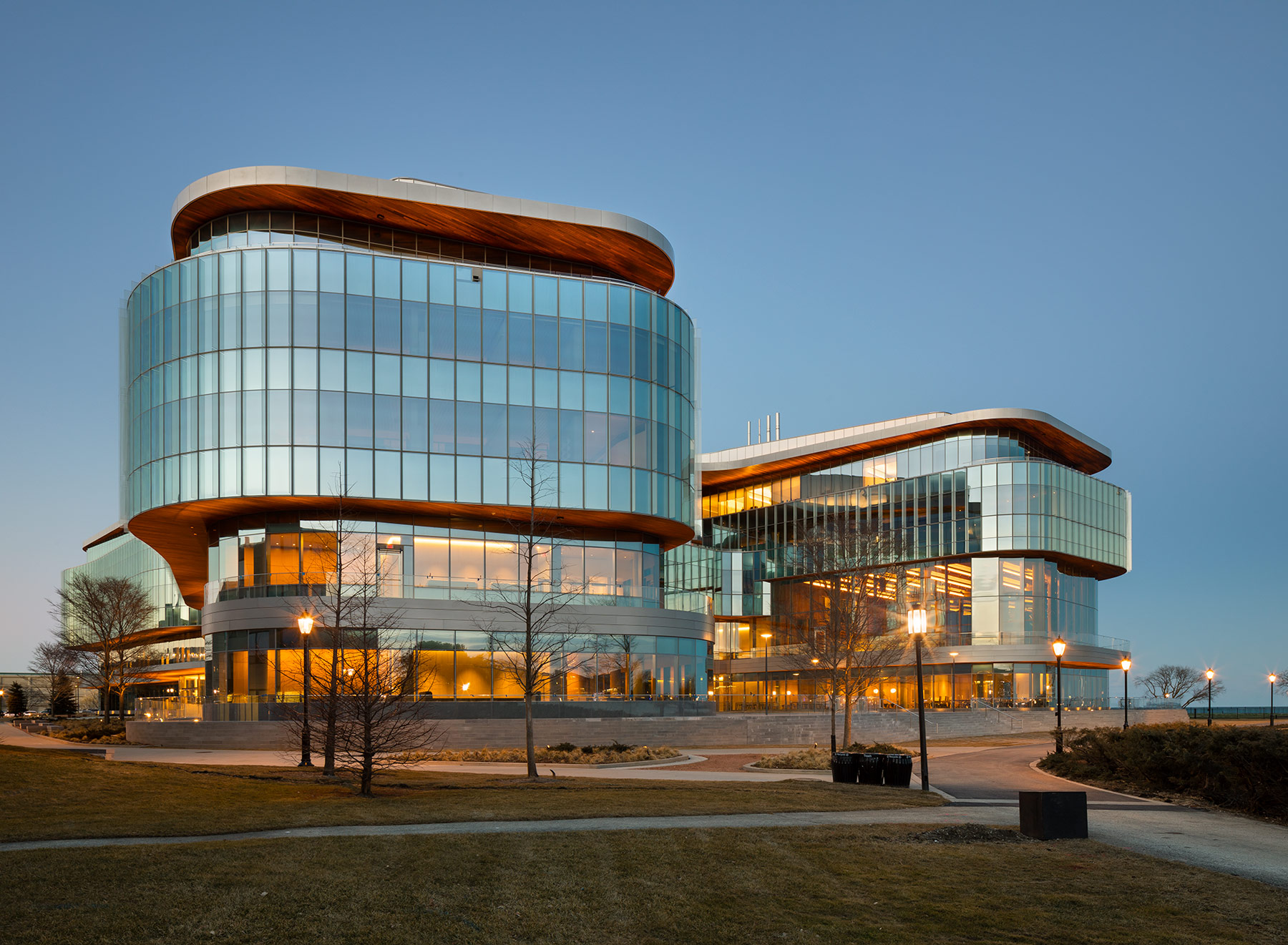
The average Kellogg undergraduate GPA for MBA students has stayed at 3.6 since 2014.
8. Tuck School of Business – Dartmouth College
The average GPA for incoming students at Dartmouth’s Tuck School of Business has gone up and down throughout the years, but has consistently stayed among the highest in the country- down slightly from 3.52 in 2015 to 3.51 this year.
9. Columbia University – Columbia Business School
The Columbia Business School has always received distinctions as one of the top MBA programs in the country, and their average GPA for incoming students at 3.5—which has stayed the same for more than five years—is no exception.
10. MIT – Sloan School of Management
Typically placing much higher on the list, the average Sloan School of Management at MIT has decreased in recent years, from 3.54 in 2015 to 3.49 for this year’s incoming class. The number nonetheless still remains among the highest average GPAs for MBA programs throughout the country.
What are the Best MBA Programs by Specialty?

Each year, U.S. News and World Report looks at the top business schools around the country to decide which offer the best MBA programs. The goal is to help MBA candidates most effectively choose the best MBA degree to help them achieve their goals based on their interests and strengths. The problem is that there are hundreds of programs and it can be difficult to weed out all the noise to get to the information that you want most.
That’s why the U.S. News and World Report decided to break down all of their findings into a more easily consumable ranking. They outlined the top MBA programs by discipline to help you quickly and easily find the school you’re looking for. Each of the schools on the list was chosen based on alumni interviews, schools statistics, research data, and more.
We’ve broken down the results below along with crucial information about each school listed and where you can learn more information.
Wharton MBAs, Justin Tuck, Challenge Classmates

“If every MBA pledged just 1 percent of their post-MBA salary to charitable giving, what might be the potential social ramifications?” That was the question Kate Epstein and Josh McCann sought to answer when they were MBA students at the University of Pennsylvania’s Wharton School. The 2014 graduates would go on to found One for the World in an effort to make philanthropic giving easier, and even capturing the attention of former NFL star Justin Tuck.
McCann first proposed the idea as part of speech assignment, and Epstein came on board to help grow it into an organization with chapters at universities all over the country that focus on giving back in significant ways. With more than 300 members across six schools, the One for the World movement has impacted charitable donations around the globe—and its influence continues to grow.
More recently, former NFL New York Giants and Oakland Raiders player Justin Tuck, a 2018 Wharton graduate, sought to encourage participation among current students as part of an April One for the World “Lunch and Learn” on campus. He discussed the importance of giving now, advising attendees not to wait to give until the have “more money.” Tuck explained that giving just 1 percent of your salary now won’t really impact your bottom line and has the potential to make a major difference in the world.
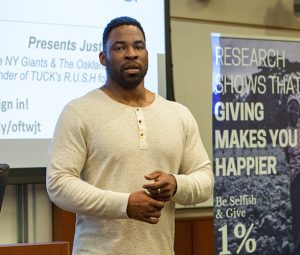
Former NFL player Justin Tuck speaks at an MBA lunch event / Photos by S. Nibras Islam.
Tuck, who himself has taken the pledge, talked about how the organization made an impact on his personally. “One for the World has lowered the boundary of entry for giving to kaput. I don’t have to perform due diligence on how much of what I’m kicking in is furthering the mission— they’ve done that for you.”
This year has been Wharton’s most charitable year thus far. The MBA Class of 2018 has pledged more than $86,000 to various charities, with 13 percent of the class taking part. As for where those donations have made a difference, One for the World carefully vets each of its philanthropic organizations to analyze the ones that are most effective.
In just four years, that charitable impact has afforded 400 years of healthy life to people around the world, provided clean water to more than 28,000 people, donated health products and services to more than 10,000 people, and much more.
For Tuck, the key to giving is to simply hit the ground running. “There’s opportunity and need everywhere. Find something you’re passionate about.”
To learn more about One for the World, read the full news story on the Wharton MBA website.
This article has been edited and republished with permissions from our sister site, Clear Admit.
Healthcare Tech Teams Dominate 2018 Wharton Startup Challenge
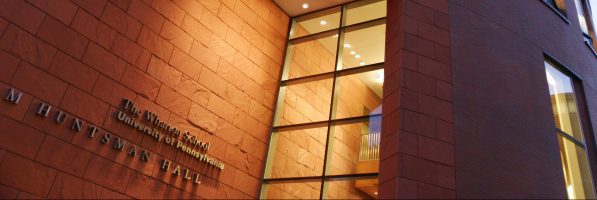
Just a few weeks ago, the University of Pennsylvania’s Wharton School held the 2018 Wharton Startup Challenge, which awarded cash prizes to outstanding student entrepreneurs whose startups all have the potential to become “the next big thing.”
Billed as the school’s most significant entrepreneurship event of the year, the Wharton Startup Challenge saw 27 semifinalist teams compete for $135,000 in cash prizes.
Eight teams made it to the finals on April 27, where their ideas were assessed by six top-level executives from companies including Joor, Karlin Asset Management, the Charian Group, Monetate, Examworks, and Orasure.
The judges were asked to evaluate each team based on varied criteria, which included the quality of the idea, product, or service; how prepared the team was for launch; and their execution plan.
Wharton Startup Challenge Winners
Sanguis
Sanguis, an at-home blood cell counting device for chemotherapy patients, took home the $35,000 grand prize, along with $15,000 in legal, accounting, and strategy services.

Dubbed “a medical device dream team,” Sanguis’ Daniel Zhang, Prateer Agarwal, and Diyanish Agarwal are close friends who met as first-year medical school students. Their device measures neutrophil levels, which are the human body’s primary method of fighting infection. Patients can use Sanguis to track their neutrophil levels themselves and contact their doctors immediately with any potential problems.
On the decision to focus on this issue, the Sanguis team points to harsh statistics that 400,000 cancer patients will suffer from low neutrophil levels during their chemotherapy treatment each year. They are especially passionate about the device’s potential to reach underserved regions, citing the team’s Indian heritage as a personal connection. “It’s especially important to us…Sanguis could be a huge game-changer.”
MD Ally
Second prize and the competition $10,000 “Innovation Award” were both awarded to MD Ally, an emergency tele-medicine company designed to allow 911 dispatchers to instantly access ER physicians for non-emergency calls.
MD Ally “moves up the clock” of emergency care and ultimately “drives savings for patients, payers, and municipalities” by reducing non-emergency use of ER physicians and resources. Randy Findley and Shanel Fields, both of whom work in healthcare technology, developed the idea. The duo is acutely aware of the industry’s technological limitations “that prevent first-responders from delivering the best and most timely care.”
Strella Biotechnology
Strella Biotechnology took home three different awards—the Social Impact Prize ($10,000), the Michelson People’s Choice Award ($3,000), and the Crowd Favorite Award. Strella left an impression with its presentation of a biosensing platform that predicts the ripeness of fruit and reduces “food spoilage and waste in the supply chain.”
The product allows for ripeness monitoring while food is in storage so businesses can “always locate the readiest product for their customers.” Strella’s team pointed to statistics that demonstrate how almost a third of all food in the world is wasted or spoiled before it can be eaten. Strella hopes its services can work directly to fight global hunger.
Avisi Technologies
Finally, the third prize of $10,000 was awarded to Avisi Technologies, whose VisiPlate is “a nanoscale defense against blindness from glaucoma.”
The VisiPlate is a “nanoscale drainage implant” used to fight glaucoma and mitigate a wide spectrum of treatment issues, including “post-operative double vision, excessive scar tissue, patient discomfort, tissue erosion, and bleb failure.”
Prior to the competition, the Avisi team made a point to highlight the many resources Wharton makes available to its student entrepreneurs. Team leader Rui Jing, a finance and strategic management specialist who spoke enthusiastically about Wharton, perfectly encapsulated the mood of this year’s competition: “We see this as a great opportunity to leverage resources at the university to do something impactful.”
